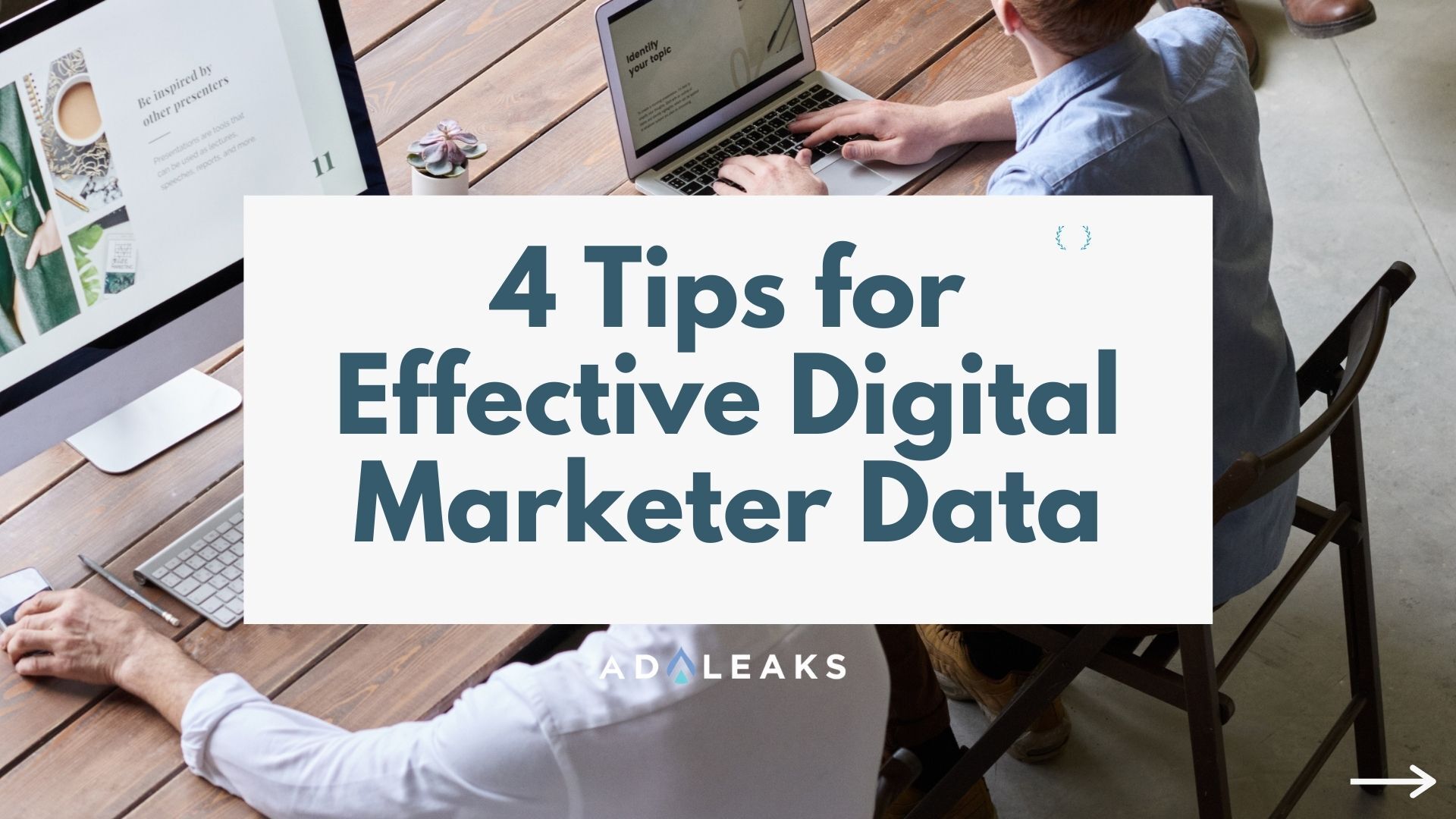
4 Tips for Effective Digital Marketer Data


In just about every facet of life, we can get overwhelmed by data. We can access and find out anything with a few swipes or the touch of a button.
However, this has not necessarily made anything in life simpler. Why? Because being surrounded by so much data makes decisions much more difficult. The same is true of digital marketer data. We have the data at our fingertips, but not always the skills to digest it.
With that in mind, we’ve put together four quick tips to keep in mind when you’re wrangling your digital marketing data.
1. Get Good Quality Data
Nearly 20% of companies have lost customers because their data on them was incomplete or inaccurate. This means it is important to shore up the data you have on customers.
So where should you begin?
- Apply the right metrics and analytics to your customer data
- Make sure email addresses and leads aren’t entered twice
- Ask customers for information via surveys or feedback requests
- Assign an employee the responsibility of data quality
- Organise data in a single location and make sure it is integrated
2. Avoid Analysis Mistakes in Your Digital Marketer Data
Data analytics should help you understand your customers better as well as predict their future behaviour.
It helps to determine likes and dislikes. The data should ensure you target customers better. However, there are certain things that could fudge that data.
- Seasonality
- Multi-channel engagement
- Focusing too much on certain metrics and ignoring others
- Bad visualisation of the data
- Making decisions based on numbers, not conclusions
By avoiding these data analysis mistakes, your campaigns will get stronger and generate more engagement.
3. Know Your Metrics
This is where data tracking and goals coincide. It is necessary to know what metrics you are aiming for, as well as the timelines for those metrics. If the metrics aren’t where they should be, the campaign needs to be tweaked.
So what should you be tracking?
- Channel-specific traffic
- Cost per lead
- Return on Investment (ROI)
- Customer lifetime value (LTV)
- Time spent on site
- Bounce rate
- Conversion rate
- Click-through rate (CTR)
That’s just a few, and the list goes on from there.
Deciding which metrics to focus on will depend on the niche and campaign. That said, one mistake digital marketers tend to make is looking at the metrics independently instead of as a whole.
Why is this a mistake? Because only by understanding why some aspects are working and others are not can you make the right adjustments.
But why is it so difficult? Because in terms of detecting patterns, humans can identify a maximum of three attributes or variables. By applying data science to campaigns, you can find different types of patterns beyond basic human observation. This information can be used to improve strategies.
4. Data Visualization
The main problem with data (besides getting your hands on it) is that, as mentioned above, it is overwhelming and cumbersome.
Excel, while useful, doesn’t help anyone visualise data or get a broader perspective. That’s why you need the right data visualisation tools like Google Data Studio.
We have a unit with videos and templates in the AdLeaks Vault to help you see how to break down your data, understand that data, and use that data in campaigns. (Note: Only AdLeaks members can access this.)

Final Thoughts On Digital Marketer Data
The key to data is learning how to understand it. There is a big difference between finding an answer and understanding what it means. You can know your ROI is bad, for example, but not know why — and that’s a tough spot to be in!
Finally, get into the habit of breaking information down into small pieces so you can use what you know wisely.
Good luck! 😉
To take advantage of deals and get exclusive digital marketing secrets, click here to Join AdLeaks now!

